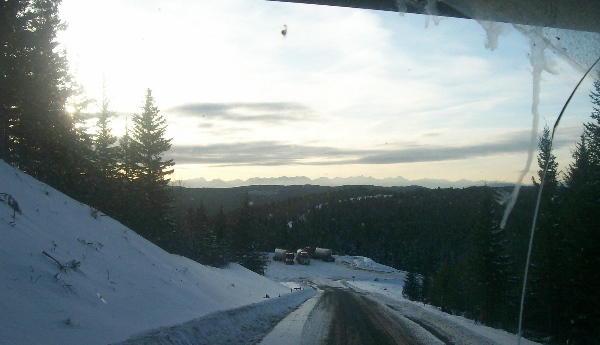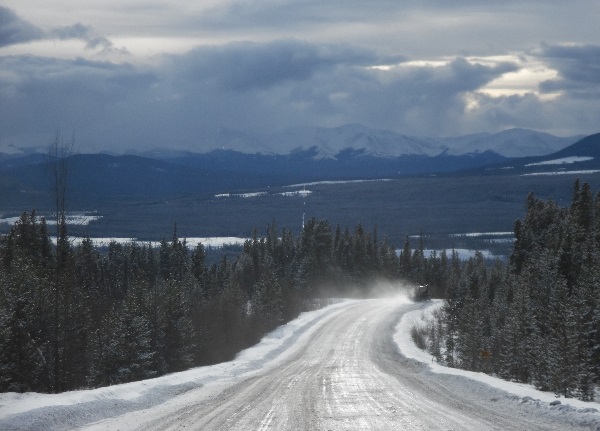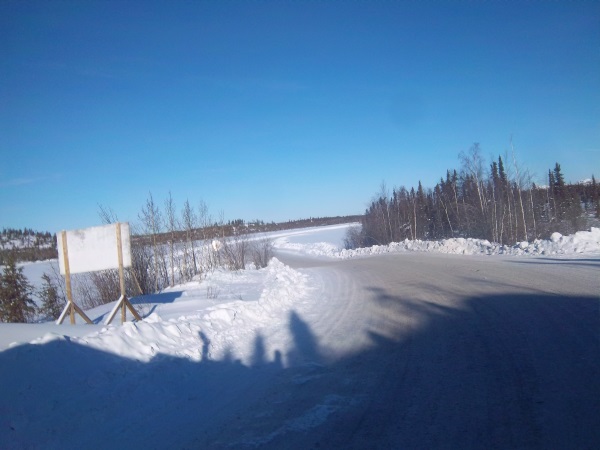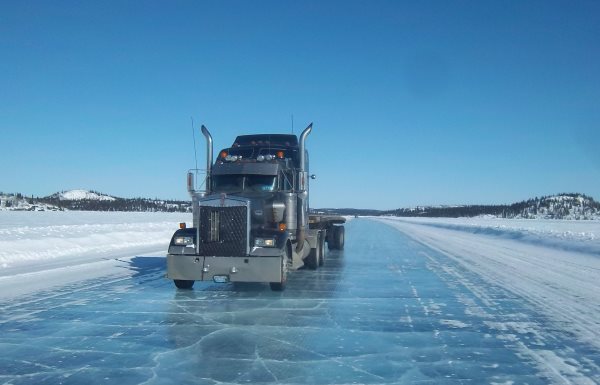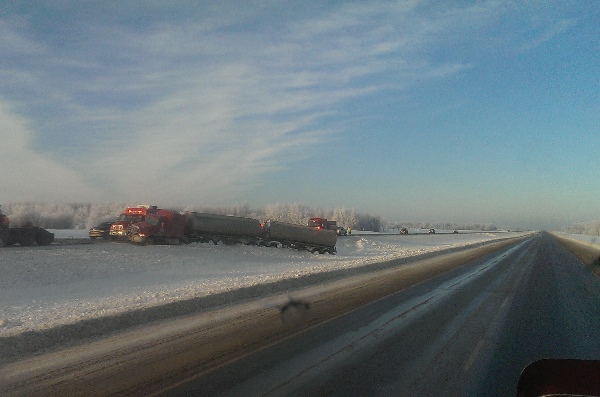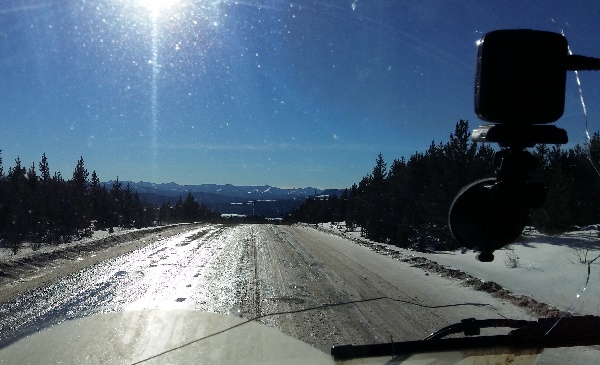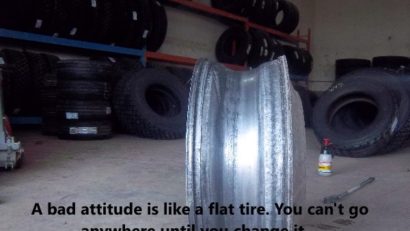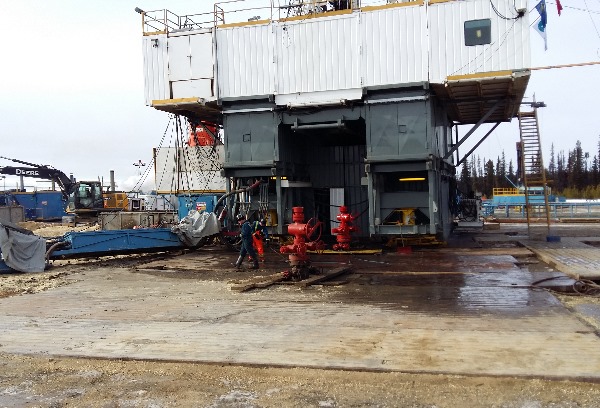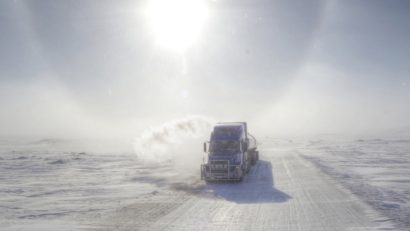Tow Tractors
Fortunately, most oilfield companies will supply mandatory tow tractors when grades are steep. They do this for a few reasons. (Read on further down where we relate a story about the consequences of a blocked road.) This is becoming more common now as safety continues to be an issue.
For many drivers, it was an exciting challenge to “make” a bad hill on your own. Maybe for a few bragging rights to say…..”I made that hill barefoot.” Most older experienced drivers will just say “Why try if there’s a tow tractor”? It’s not your road or equipment. Digging, clawing, and bucking up a hill can easily take out a drive shaft and chews up the road.
Sliding down an icy hill backwards and ending up in the ditch is no fun either. If you slide down backwards, it’ll be a combination of skill and luck that will keep you out of the ditch.
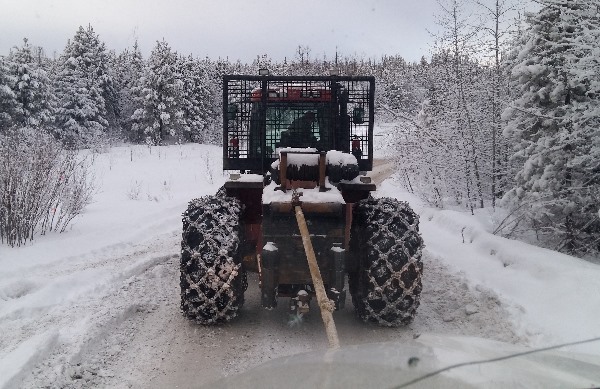
Oilfield driving has changed with mandatory tow tractors assigned to steeper hills. The consequences of a blocked road can cost, time, money, equipment damage, damage to the road, and block access in emergency situations.
Somewhere around 2007 I remember a green (new) driver bailing out of his truck on an icy hill after it started to slide backwards. His truck collided with 2 more trucks from his company on the way down. (They were all brand new.)
Another lesson we covered earlier is, don’t start up a bad hill until you’re sure it’s clear from the other drivers.
This next story really shows the consequences of blocking a road because of a poor judgement call.
My best friend and I were on our way to a location. We made the decision to chain up on the way in knowing the area was challenging. About 1 km away from arriving at the location we came across an accident. There were three trucks all from the same company headed to the same place, but they decided they didn’t need any chains.
Two of them were in the ditch and they had the narrow road completely blocked. To make things worse, there was a medic trying to get to the hospital with an injured worker from location that couldn’t get by. This looks incredibly bad on the driver and the company. An incident like this can cost a life, your job, or your company a pretty big contract. This next picture is where the incident happened. Take a look at the overall terrain and decide if you would expect to chain up in a place like this or not?
Over the summer of 2016 we’ll be working on a small series on chaining up. This includes some pictures and video, so keep your eyes on the site. Watching video will help, but it’s also a hands on learning thing. Watch and learn from others in the field and have an experienced driver help you until you’re comfortable chaining up on your own.
Everyone will teach you something with oilfield driving whether it’s what you should do, or shouldn’t do. You’ll always find a way that works best for you and find your own groove.
When learning from others, always keep this in mind.
“Moral Intelligence”
“Moral intelligence is the capacity to understand right from wrong; it means to have strong ethical convictions and to act on them so that one behaves in the right and honourable way”.
̴ Dr. Michelle Borba
The importance of this quote as a training tool is it allows you to differentiate between good habits and bad habits that others will teach you. Don’t let the mistakes of others cost you.
General oilfield driving tips
- Oilfield roads are sometimes patrolled by the companies that own them. Some oil companies even run their own radar patrols. Getting caught doing anything careless could mean a fine, suspension from the road, or being banned from working for a particular company.
- Oilfield driving roads are often narrow and rough so drive accordingly. Observe the posted limits and slow down when passing other vehicles so you don’t spray their windshield with rocks. Unfortunately, not everyone will be considerate out there, but the drivers that aren’t usually don’t last very long. Someone will report them and they could be banned from using the roads.
- You never know who’s watching you. or who’s in the vehicle you’re passing.
- Watch out for narrow bridges, and drive slow. They’re not designed to have a 50 ton load slammed into them at high speeds. They’re designed to have heavy loads roll over them at a reasonable speeds. If you hit these bridges hard enough you can dislodge the support, or disturb the ground around it.
- Washboard gravel roads are dangerous and can almost vibrate you off the road. Slow down for washboard areas, which typically occur in uphill sections. Watch out for wildlife like deer, bears, moose, buffalo, elk, mountain sheep, caribou and even cougars.
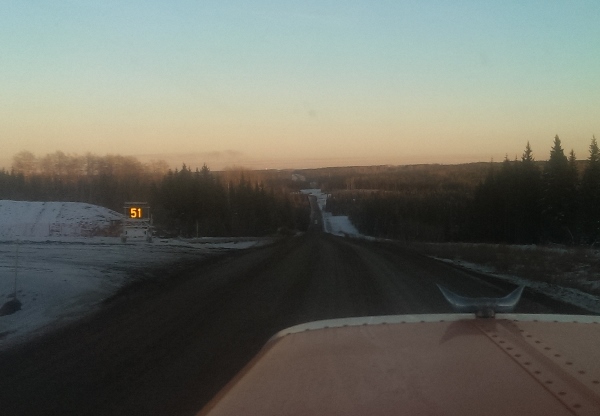
Oilfield Driving is all about safety. Many companies now have their own radar patrols and and equipment to monitor drivers.
So these are some of the conditions you can encounter in the oilfields. Hopefully, you’re not deterred from pursuing a career in oilfield driving. It really is a fun, challenging, and financially rewarding career.
What makes it all come together is that you’re not alone out there. VHF radios are how everyone communicates safely on these back roads. That’s our next section.
